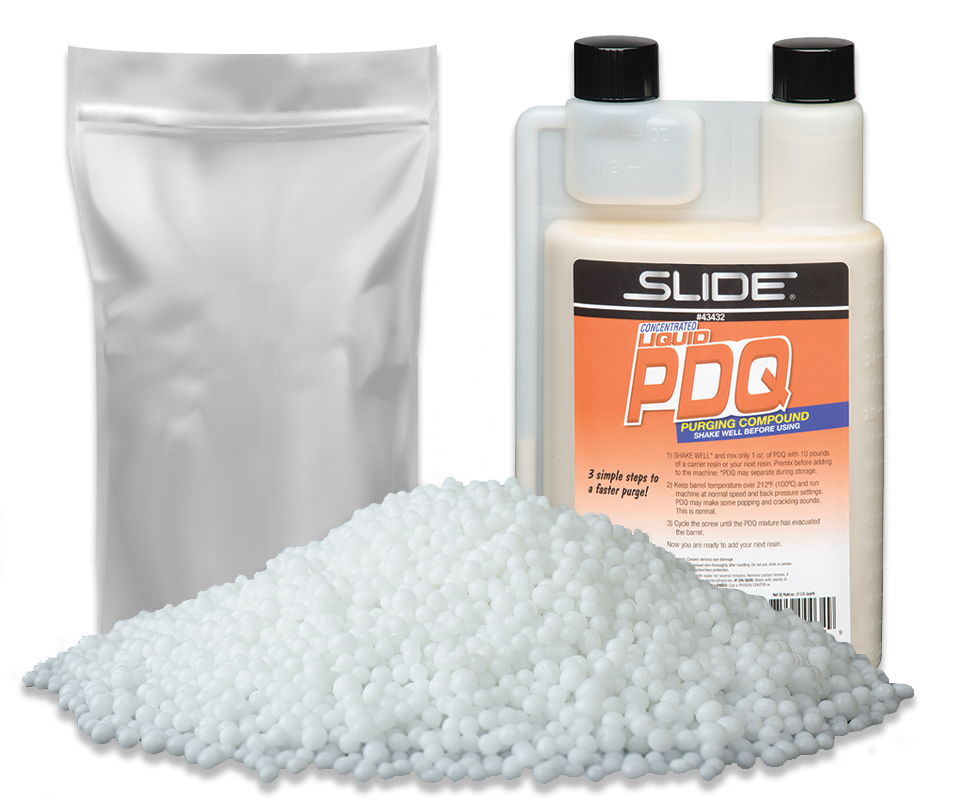July 26th, 2021
In the molding industry, shortening a cycle time by even a couple of seconds can yield huge increases in profit. While elements like resin costs and clamp speeds are carefully calculated, many molders overlook the importance purging compounds can have on cycle efficiency and overall molding efficiency.
Purging a mold is necessary during product changeovers, yet can result in loss of valuable time, money and material. Complete machine shutdowns are costly. Although it is possible to purge a mold without a purging compound, using one typically shrinks the process to minutes, keeping downtime to a minimum.
Which purging compound is best for you?
In order to get the most out of your purging compound, it is essential to choose a medium that will work best with your equipment and process. The right formula will speed up resin switches to maximize your productivity and decrease costs. While many solutions accomplish relatively the same thing, they are specific to certain applications. The preferred purge material will vary depending on your resins, process and operating temperatures.
There are typically three types of purging compounds:
1. Mechanical
2. Chemical
3. Liquid
Mechanical Purges: Mechanical purging formulations rely on shear force and the differences in viscosity between materials to help scrub or force out the unwanted contamination. Since there is no chemical reaction or soak time, these compounds use the machine’s power to do the work. As long as pressure is present, a mechanical purge compound proves to significantly help the purging process and tends to be the least expensive.
Chemical Purges: Unlike mechanical purges, chemical purges work well in parts of the barrel, screw and manifolds where there is low pressure. They generally require a 5-30 minute soak cycle. When the purge contacts the unwanted resin or carbon buildup, a chemical reaction takes place, helping to break bonds and remove the contaminants.
Liquid Purges: Liquid purges are considered a subset of the mechanical family. The fluid is mixed with a carrier resin and then run through the molding machinery. This process disrupts the flow lines and increases volume inside the barrel. As a result, unwanted resin is scrubbed away and able to flow out of the machine.
There is never a one size fits all solution, and therefore careful research and testing should be performed before making any investment. For this reason, Slide Products offers trial samples and will even send a factory technician to help fine-tune your processing and purging processes. Make the switch and measure the benefits a purging compound can have on your molding operation with our customizable Purge Cost Calculator. Improve your profitability today!
For additional help, contact our molding experts at Slide Products. With years of experience and knowledge, just a quick conversation can greatly reduce your purge time.




